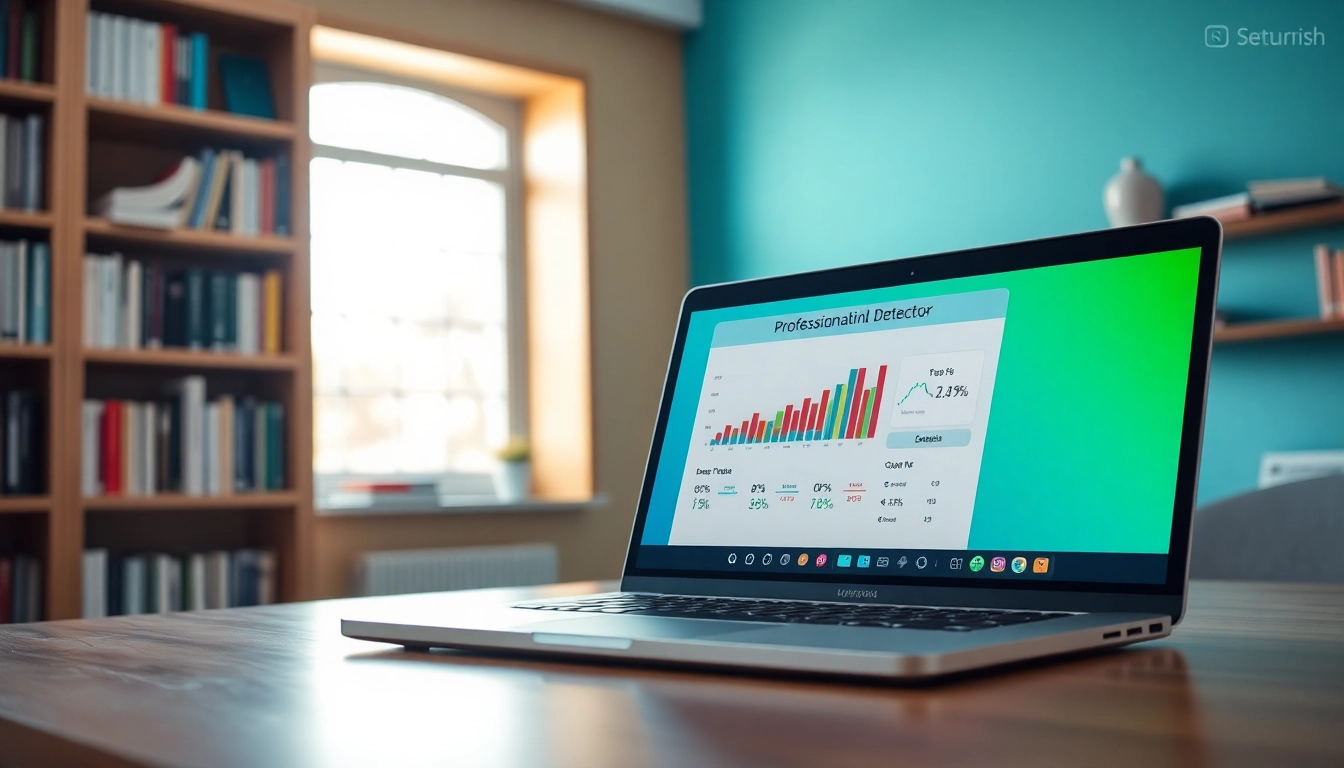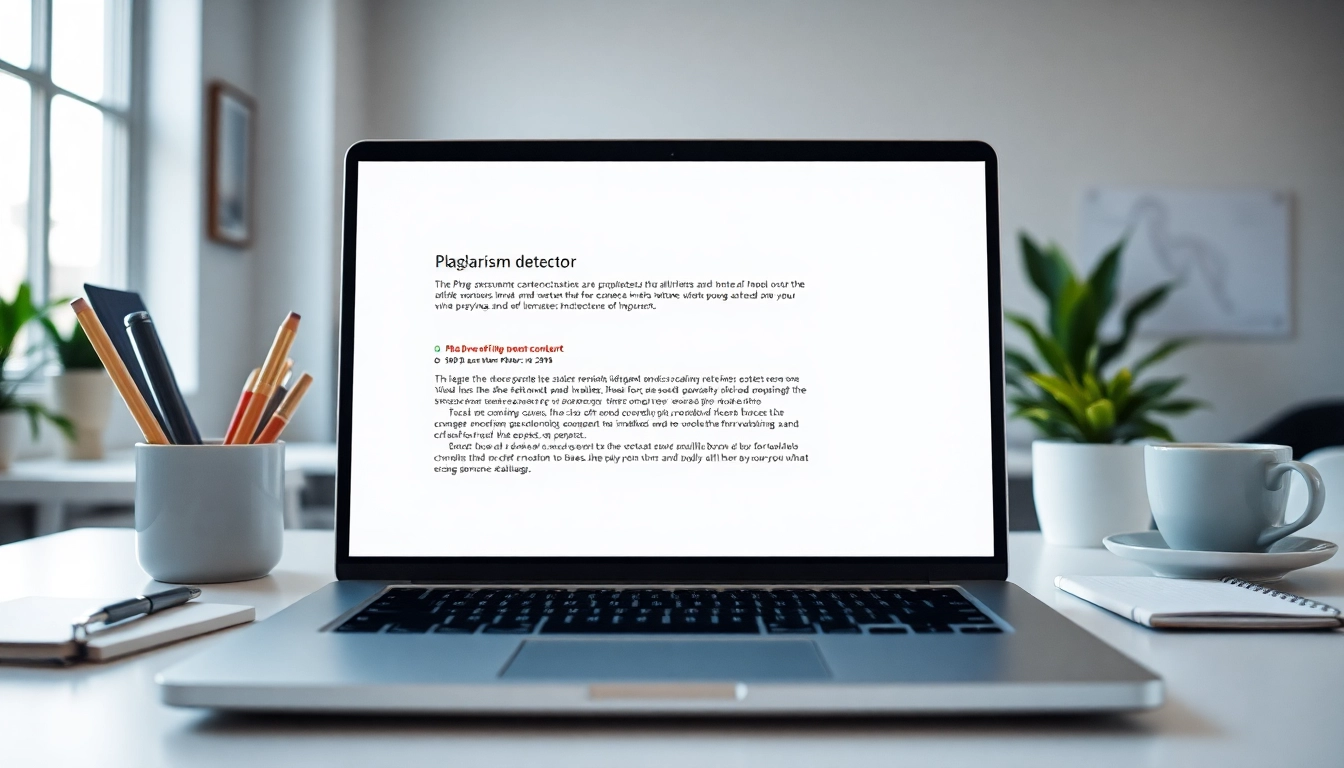Understanding Plagiarism Detectors
1. What is a plagiarism detector?
A plagiarism detector is a specialized software tool designed to identify instances of copied or duplicated content within written works. These tools compare submitted text against extensive databases of academic and online sources, looking for similarities and potential matches. Whether you’re a student wishing to submit original coursework or an educator needing to uphold academic integrity, a plagiarism detector serves as an essential component of the writing and review process. This tool is effective not only in ensuring text originality but also in educating users about the importance of ethical writing practices. For those just starting in the realm of academic writing or content creation, understanding the function and necessity of a plagiarism detector can significantly impact the quality and credibility of their work.
2. How do plagiarism detectors work?
Plagiarism detectors function by employing complex algorithms and advanced database technology. When a user submits text, the tool breaks down the input into smaller segments, such as phrases or sentences. It then compares these segments against multiple sources, including academic journals, books, websites, and other text repositories. The process involves:
- Matching Algorithms: These algorithms identify similarities in phrasing, synonyms, and even paraphrased ideas. The detector pinpoints both exact matches and close variations.
- Database Search: High-quality plagiarism detectors maintain massive databases that are constantly updated. This ensures a comprehensive comparative analysis that includes the most current and extensive array of potential sources.
- Report Generation: After analyzing the text, the software generates a report that highlights matching content and indicates the percentage of originality. Users receive insights into which sections may require rewriting or proper citation.
3. Importance of using a plagiarism detector
The significance of employing a plagiarism detector extends beyond just meeting academic requirements. Here are several key reasons why using these tools is paramount:
- Academic Integrity: Maintaining integrity in scholarship is essential. Plagiarism detectors help students and researchers present original ideas and give credit to the original authors, fostering a culture of trust and respect in academia.
- Improved Writing Skills: By using a plagiarism detector, writers can learn from their mistakes. Understanding areas where they fell short allows for growth and better writing practices in the future.
- Avoiding Consequences: Plagiarizing can lead to severe academic and professional repercussions. Using these tools proactively mitigates the risk of facing penalties associated with stolen work.
Types of Plagiarism Detection Tools
1. Online plagiarism detectors
Online plagiarism detectors are web-based tools that offer ease of access without the need for software installation. These platforms typically provide instant results and can handle various file formats. Some popular options include Turnitin and Grammarly. Here are key characteristics:
- Instant Results: Users can quickly determine the originality of their content, enabling immediate revisions.
- Multiple Format Support: These tools often accommodate text pasted directly into the interface or uploaded documents.
- User-Friendly Interface: Most online detectors exhibit intuitive layouts, accommodating users with varying levels of technological proficiency.
2. Software-based plagiarism detectors
Software-based plagiarism detectors require installation on a user’s device but often offer advanced features linked to extensive scanning capabilities across various local and online databases. They may also incorporate features such as:
- Custom Database Creation: Users can add specific sources to tailor the detection process to suit particular needs.
- Enhanced Reporting Tools: These tools often provide detailed analytics beyond mere similarity percentages, allowing users to dissect their work at a granular level.
- Offline Functionality: Once downloaded, users can check documents without needing an internet connection.
3. Comparing effectiveness of various tools
While all plagiarism detectors share the same primary function of identifying potential plagiarism, they differ in several aspects, including effectiveness, pricing, and user experience. Key elements to consider when comparing tools include:
- Database Size: Larger databases typically provide more reliable results, as they can detect similarities against a wider array of texts.
- Accuracy of Reporting: The precision of the analysis and the clarity of reporting can vary significantly among tools. Some tools disguise duplicates under paraphrased content, while others might provide more detailed insights into context.
- Pricing Structure: Some tools are free but may come with limitations, whereas premium services often offer enhanced features and capabilities.
How to Use a Plagiarism Detector Effectively
1. Step-by-step guide on usage
Using a plagiarism detector is relatively straightforward, but following the right steps will ensure optimal effectiveness:
- Prepare Your Document: Before inputting text, ensure it’s finalized. Remove any excessive formatting that could confuse the detector.
- Enter or Upload Text: Depending on the tool, either paste your text into the provided field or upload it as a document.
- Select Detection Settings: Some tools allow users to customize settings, such as sensitivity levels or databases to search against.
- Run the Check: Initiate the plagiarism detection process and wait for the analysis to complete.
- Review the Results: Carefully analyze the report provided, checking for highlighted sections and percentage scores.
- Revise as Necessary: Address any highlighted areas by rewriting or properly citing sources before final submissions.
2. Common user mistakes and how to avoid them
Even with understanding the mechanics of plagiarism detectors, users often make mistakes that hamper the effectiveness of these tools:
- Pasting Unformatted Text: Copying and pasting directly from word processors can introduce hidden characters. Always paste plain text when possible.
- Inadequate Document Revision: Failing to revise highlighted sections can result in penalties. Always ensure any flagged content is addressed appropriately.
- Overlooking Contextual Paraphrasing: Not all similar content constitutes plagiarism, as context matters. It’s crucial to understand where overlapping ideas may arise legitimately.
- Ignoring Reports: Some users overlook sections of the report that could help them refine their writing. Always use reports as learning tools.
3. Tips for interpreting results
Interpreting the results of a plagiarism check can be intricate. Here are some tips to help clarify the findings:
- Understand Percentage Scores: This score reflects overall similarity. A higher percentage indicates more overlap with existing content, but context must inform action.
- Context Matters: Analyze flagged sections with insight; not all matches equate to plagiarism, particularly in common phrases and citations.
- Use Sources for Revision: The report will often provide source links. Use these to guide how you should properly attribute or rewrite identified segments.
Benefits of Utilizing a Plagiarism Detector
1. Academic integrity and credibility
Academic integrity is a cornerstone of educational institutions. Utilizing a plagiarism detector fosters an environment where original ideas thrive while ensuring that authors respect intellectual property rights. By presenting original work, students and scholars enhance their credibility within academic circles, building reputations as honest thinkers.
2. Enhancing writing quality
Beyond merely detecting plagiarism, these tools can serve as educational resources. Writers can pinpoint weaknesses in their referencing practices or writing styles, ultimately helping to improve overall writing quality. Awareness of plagiarism pitfalls encourages thorough research and helps develop stronger analytical skills.
3. Time and cost efficiency
Investing time into a solid drafting and reviewing process via plagiarism detectors can save substantial time in the long run. By addressing potential issues proactively, writers and educators avoid the prolonged revisions needed to address last-minute plagiarism checks. This leads to more efficient workflows and less stress as deadlines approach.
Choosing the Right Plagiarism Detector
1. Key features to look for
When selecting a plagiarism detector, several key features can enhance user experience and effectiveness:
- Database Size: As previously mentioned, a larger database means more comprehensive results.
- Immediate Feedback: Real-time scanning capabilities allow for faster revisions, making the writing process more agile.
- Customizable Features: The ability to tailor detection settings enhances relevance for the individual user’s needs, ensuring precise outputs.
2. User reviews and testimonials
User experiences play a critical role in assessing the effectiveness of a plagiarism detector. Reviews on platforms like Trustpilot and academic forums often highlight issues related to accuracy, customer service, and value for money. Consider evaluating several tools via social proof to gauge reliability and performance metrics.
3. Cost comparison of popular tools
When comparing plagiarism detectors, potential users should be aware of the different pricing structures and available plans. Here’s a general comparison:
- Free Detectors: Many tools offer basic functionality for free, but users may miss out on advanced features.
- Subscription Models: Some premium detectors require monthly or annual subscriptions, offering unlimited checks and additional features.
- One-time Payment Options: Certain software allows for a single purchase for lifetime access, which can be beneficial for infrequent users.



